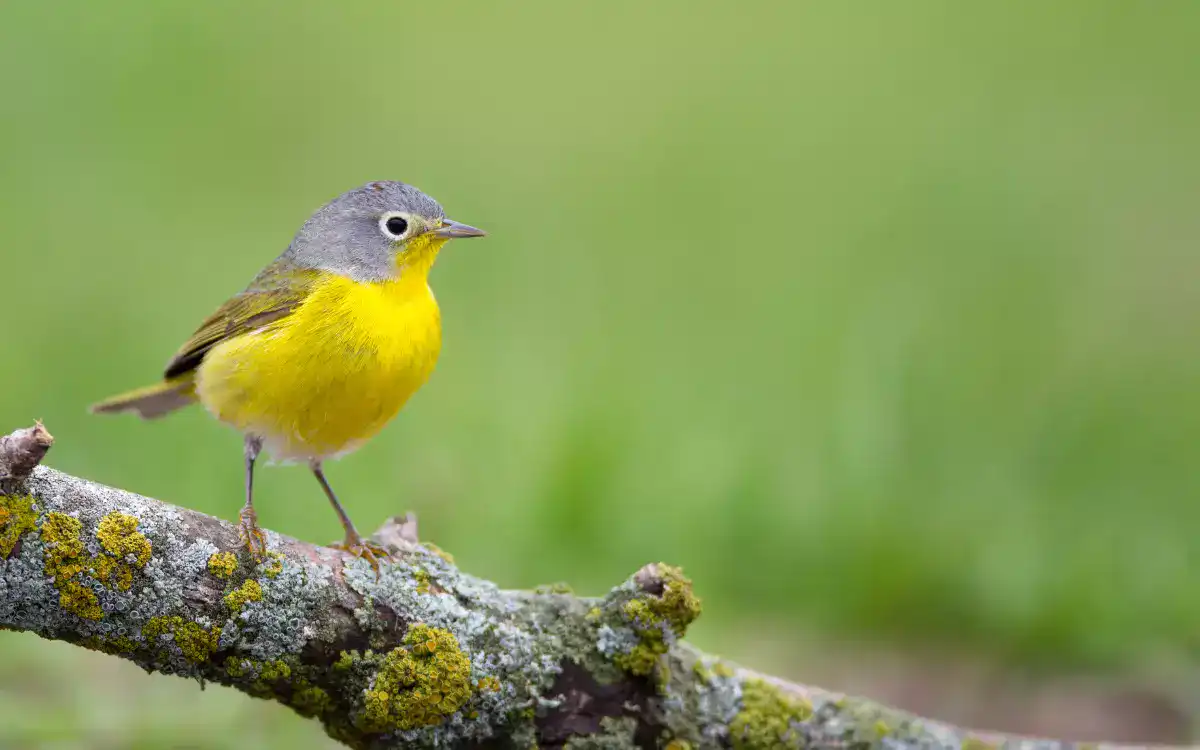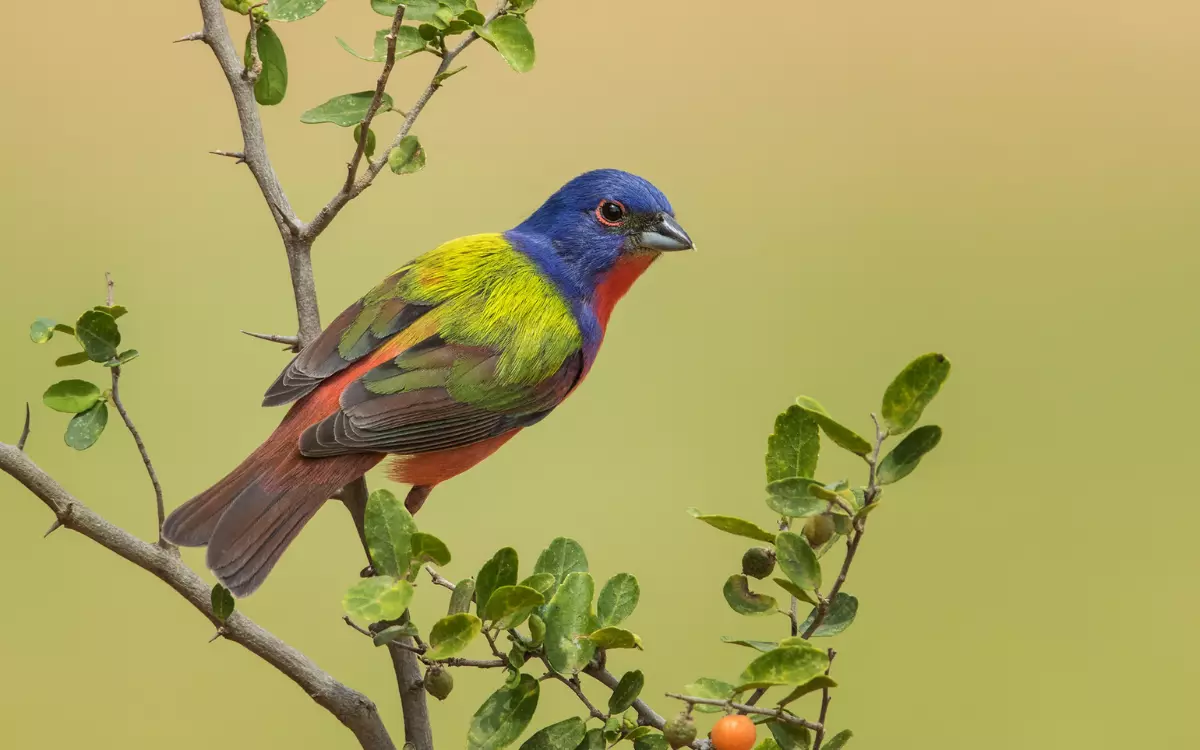16 Brown Birds in Florida (Identification, Songs & Habitat)
Florida’s birdlife isn’t just about showy colors. While cardinals and other red birds in Florida grab attention, the state’s brown birds reward patient birders with beautiful songs, fascinating behavior, and crucial ecosystem roles. For a color contrast, see our guide to white birds in Florida.
This list covers 16 brown birds you can find across Florida—how to identify them, where to look, and when you’re most likely to see them. Backyard watchers: don’t miss our tips at the end and our roundup of backyard birds in Florida.
At a Glance: Brown Birds You Can See in Florida
- Brown Thrasher – long tail, streaked chest, master mimic
- House Wren – tiny, bubbly song, cavity nester
- Carolina Wren – bold white eyebrow, loud “tea-kettle” call
- Brown-headed Cowbird – brood parasite; females plain brown
- Marsh Wren – chattering songster of reeds
- Swamp Sparrow – rusty cap; winters in marshy edges
- Song Sparrow – streaky with central breast spot
- Field Sparrow – pink bill; sweet descending whistle
- Savannah Sparrow – streaky; yellowish eyebrow
- Eastern Towhee – (female) brown back, rufous sides, white belly
- Wood Thrush – rich brown, bold spots; flute-like song
- Hermit Thrush – brown with reddish tail; ethereal call
- Brown Creeper – bark-like plumage; creeps up trunks
- Bewick’s Wren – long white-edged tail; loud song
- Winter Wren – tiny, explosive warble; forest undergrowth
- White-throated Sparrow – bright white throat; yellow lores
1) Brown Thrasher (Toxostoma rufum)

Warm brown above with bold streaking and a long tail, the Brown Thrasher is one of North America’s great mimics—often singing 1,000+ variations. Look for them in dense shrubs, edge habitats, and thickets where they scratch leaf litter for insects, fruits, and seeds. They nest low in thorny cover (3–5 eggs). Usually secretive, they give themselves away with loud, varied, mimic-like phrases at dawn and dusk.
- Length: 9.1-11.8 in (23-30 cm)
- Weight: 2.1-3.1 oz (61-89 g)
- Wingspan:11.4-12.6 in (29-32 cm)
2) House Wren (Troglodytes aedon)
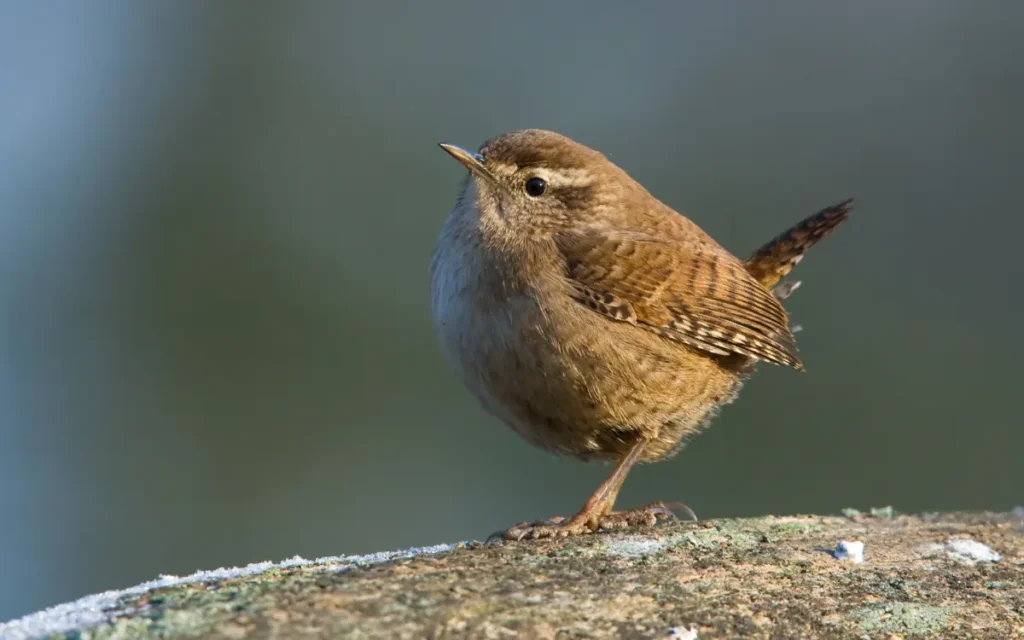
A tiny, plain-brown dynamo with a bubbly, scolding song. House Wrens use cavities and nest boxes (often stuffing them with twigs), and they’re common migrants/winter visitors in Florida. They hunt spiders and insects with quick, restless hops through brush and woodpiles—great natural pest control for yards. Many cavities they use originally come from woodpeckers—learn more in woodpeckers in Florida.
- Length:4.3-5.1 in (11-13 cm)
- Weight:0.3-0.4 oz (10-12 g)
- Wingspan: 5.9 in (15 cm)
3) Carolina Wren (Thryothorus ludovicianus)
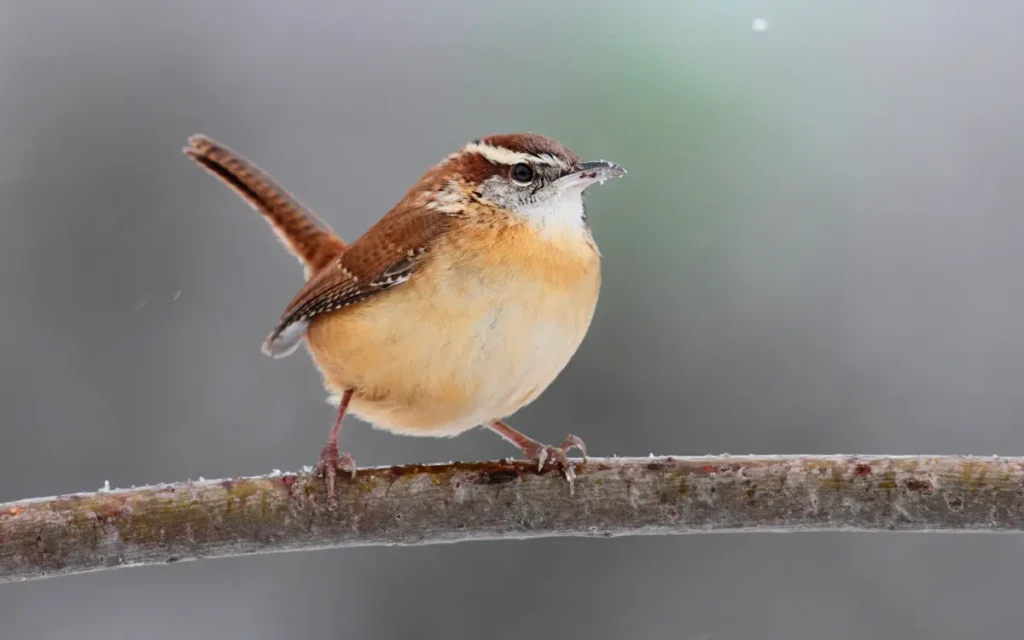
Year-round residents with rich cinnamon-brown backs, buff underparts, and a bold white eyebrow. Their “tea-kettle, tea-kettle” song carries far through forests, parks, and porches—where they’ll nest in hanging baskets and nooks. They eat insects, spiders, and some fruit. For more yard visitors like this, see backyard birds in Florida.
- Length:4.7-5.5 in (12-14 cm)
- Weight:0.6-0.8 oz (18-22 g)
- Wingspan:11.4 in (29 cm)
4) Brown-headed Cowbird (Molothrus ater)
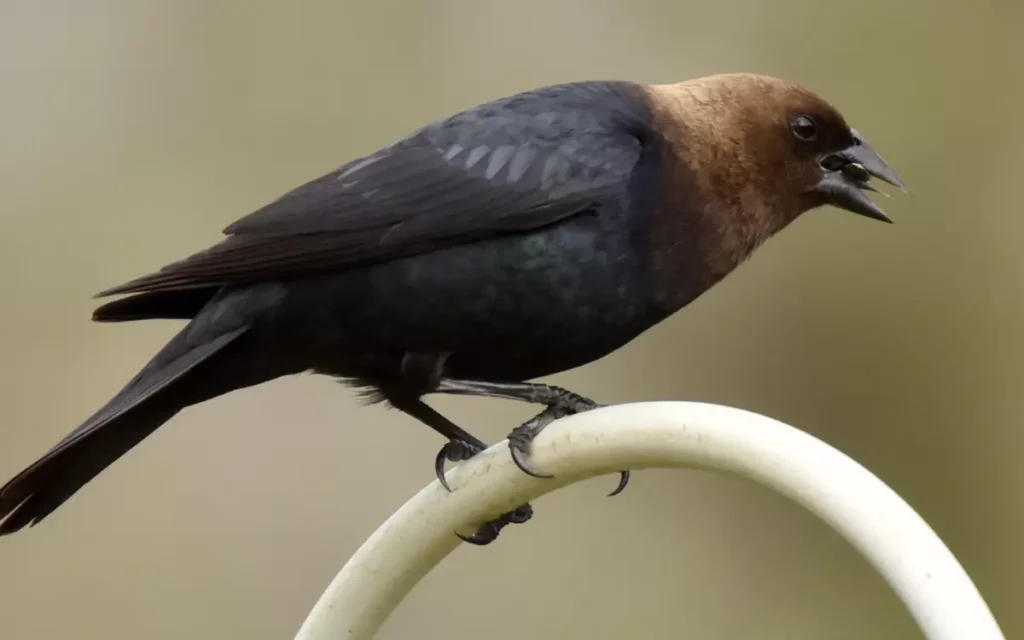
Females are plain brown; males are glossy black with a brown head. Cowbirds don’t build nests—females lay eggs in other birds’ nests (brood parasitism). Common in fields, pastures, and edges, they eat seeds and insects. For related species and ID tips, see our guide to blackbirds in Florida.
- Length:7.5-8.7 in (19-22 cm)
- Weight: 1.5-1.8 oz (42-50 g)
- Wingspan: 14.2 in (36 cm)
5) Marsh Wren (Cistothorus palustris)
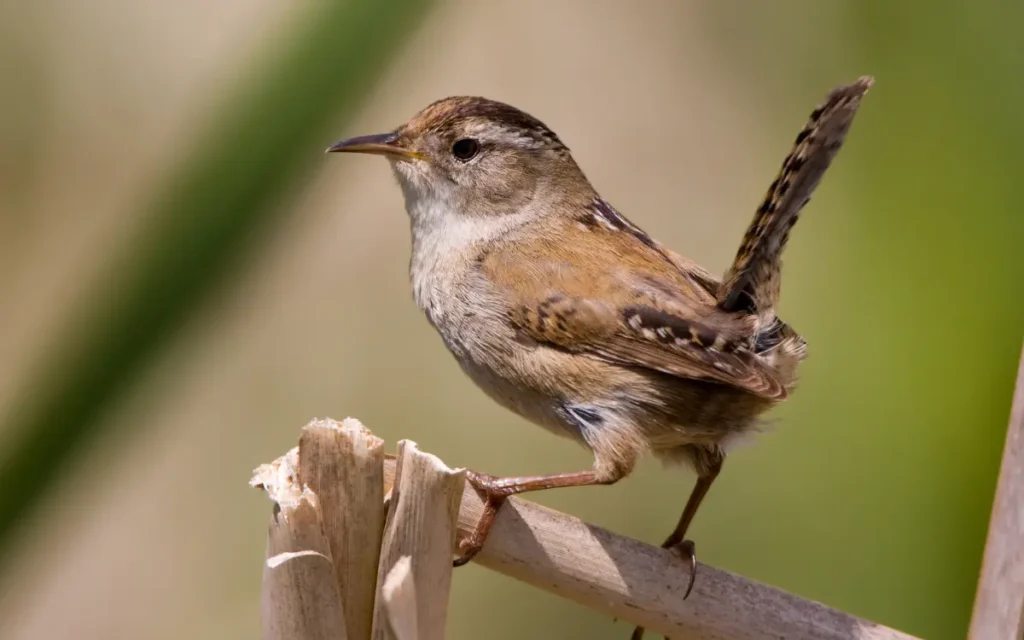
Small, brown, and bold Marsh Wrens fill cattail stands with raspy, chattering songs. Males weave several globe-shaped nests among reeds (only one is used for raising young). They hunt spiders and insects low in marsh vegetation. Scan freshwater and brackish wetlands at dawn or dusk when their songs carry best.
- Length:3.9-5.5 in (10-14 cm)
- Weight:0.3-0.5 oz (9-14 g)
- Wingspan: 5.9 in (15 cm)
6) Swamp Sparrow (Melospiza georgiana)
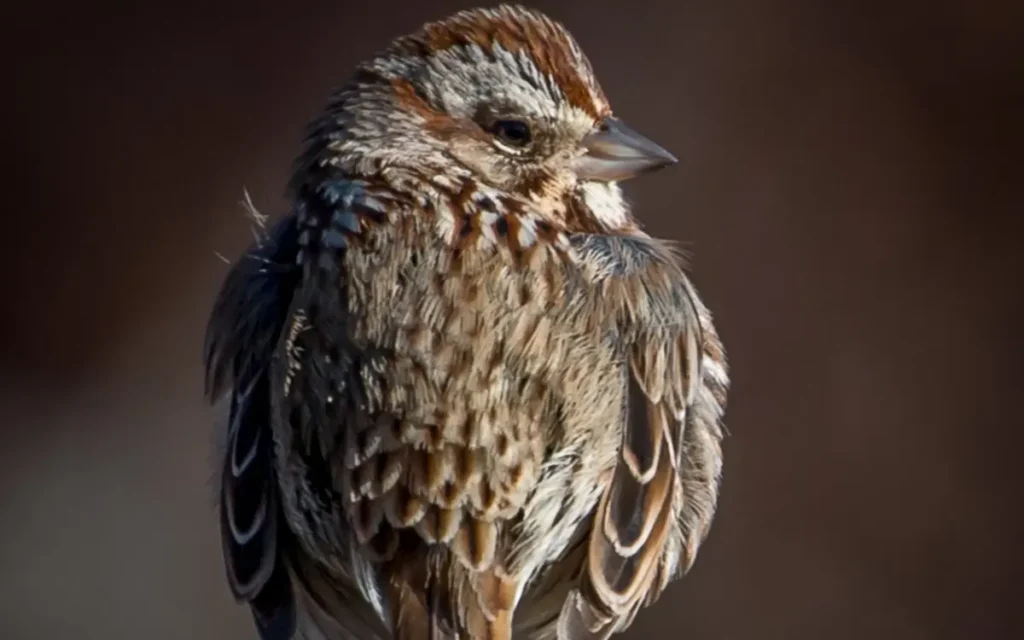
A winter visitor with warm brown tones, a rusty crown, and gray face. True to its name, it prefers marsh edges, wet meadows, and swamp thickets, where it forages low for insects (summer) and seeds (winter). Its simple, buzzy trill travels well across wet habitats—listen along boardwalks and mucky margins.
- Length:4.7-5.9 in (12-15 cm)
- Weight:0.5-0.8 oz (15-23 g)
- Wingspan: 7.1-7.5 in (18-19 cm)
7) Song Sparrow (Melospiza melodia)
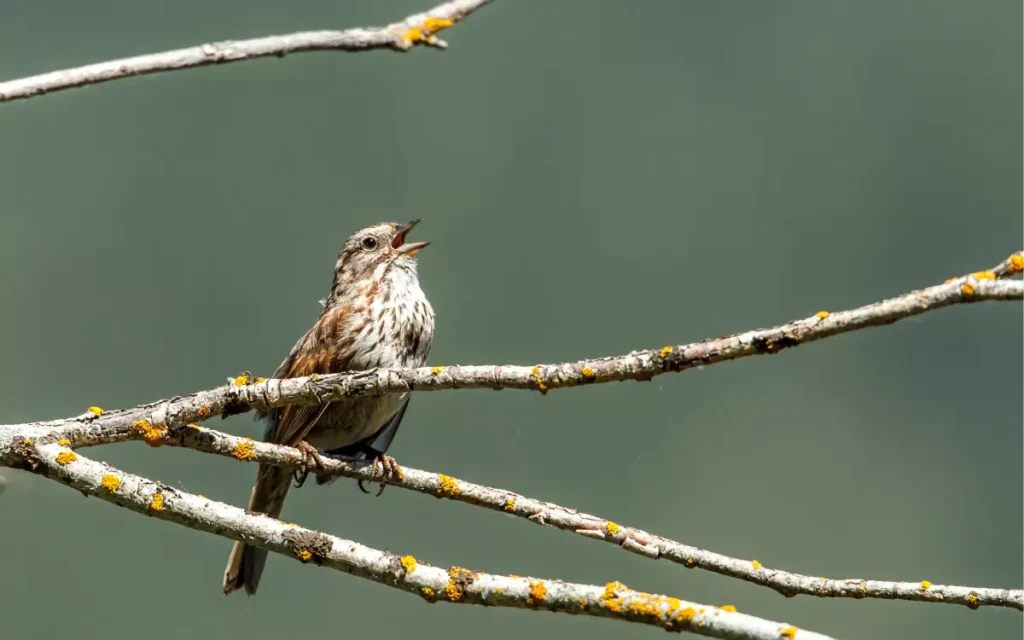
Streaky brown overall with a distinct central breast spot and longish tail. Their rich, varied songs ring from fence lines, hedges, and marsh edges. In Florida, they’re most common during migration and winter. Ground foragers for insects and seeds, they’ll visit brush piles and native plantings in bird-friendly yards.
- Length:4.7-6.7 in (12-17 cm)
- Weight: 0.4-1.9 oz (12-53 g)
- Wingspan: 7.1-9.4 in (18-24 cm)
8) Field Sparrow (Spizella pusilla)
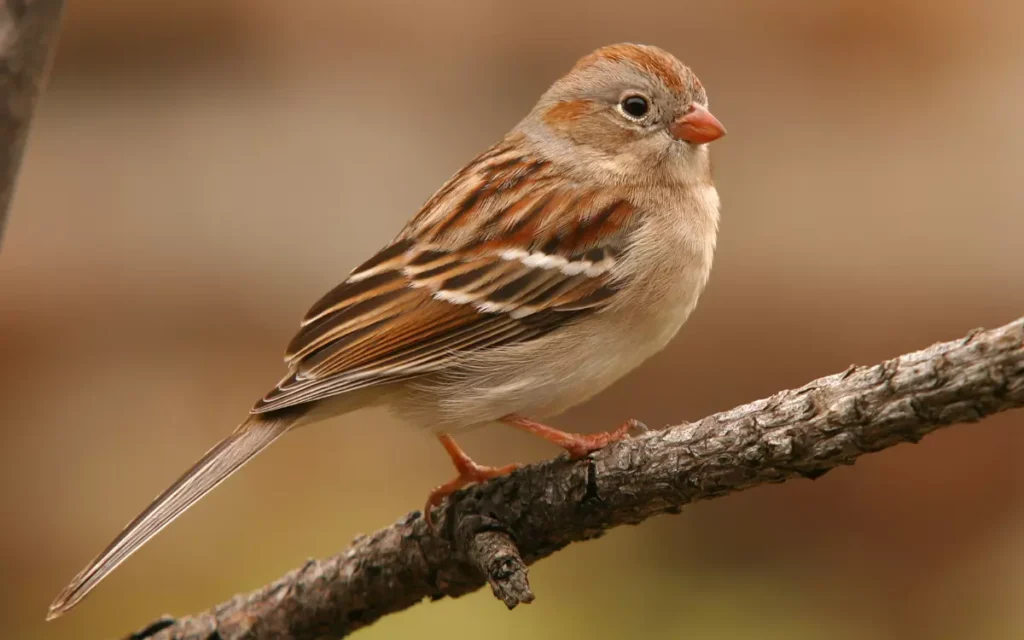
A gentle-looking sparrow with a pink bill, plain face, and clean brown back. Its song is a sweet, accelerating series of whistles. Look for them in weedy fields, old pastures, and shrubby grasslands more often in northern Florida in winter. They forage for seeds and insects low in cover.
- Length:4.7-5.9 in (12-15 cm)
- Weight: 0.4-0.5 oz (11-15 g)
- Wingspan: 7.9 in (20 cm)
9) Savannah Sparrow (Passerculus sandwichensis)

A short-tailed, streaky sparrow with a yellowish eyebrow (lores) that helps separate it from similar species. In Florida, they favor coastal prairies, fields, and salt-marsh edges primarily in winter. Forage in small flocks on seeds and insects; often flush from grasses with a quick, low flight before diving back into cover.
- Length:4.3-5.9 in (11-15 cm)
- Weight:0.5-1.0 oz (15-28 g)
- Wingspan: 7.9-8.7 in (20-22 cm)
10) Eastern Towhee (Pipilo erythrophthalmus)

Females are brown-backed with vivid rufous sides and a white belly (males are black where females are brown). You’ll hear them rustling noisily in leaf litter as they “two-foot scratch” for insects, seeds, and acorns. Common in shrubby edges and understory. Their memorable “drink-your-tea!” song makes ID easy.
- Length: 6.8-8.2 in (17.3-20.8 cm)
- Weight:1.1-1.8 oz (32-52 g)
- Wingspan: 7.9-11.0 in (20-28 cm)
11) Wood Thrush (Hylocichla mustelina)

Rich brown above with a bold, spotted breast; famed for a haunting, flute-like song that echoes through mature forests. In Florida, look in shaded hardwoods and bottomlands (mainly spring–summer in the north). They forage on insects, snails, and fruit on the forest floor important seed dispersers in woodland regeneration.
- Length: 7.5-8.3 in (19-21 cm)
- Weight:1.4-1.8 oz (40-50 g)
- Wingspan: 11.8-13.4 in (30-34 cm)
12) Hermit Thrush (Catharus guttatus)

A shy winter visitor with plain brown upperparts and a reddish tail that gently twitches. Their ethereal, bell-like song (often at dusk) is among North America’s most beautiful. Find them in quiet understory, edges, and parks where they feed on insects and berries. Often heard before seen.
- Length:5.5-7.1 in (14-18 cm)
- Weight:0.8-1.3 oz (23-37 g)
- Wingspan: 9.8-11.4 in (25-29 cm)
13) Brown Creeper (Certhia americana)
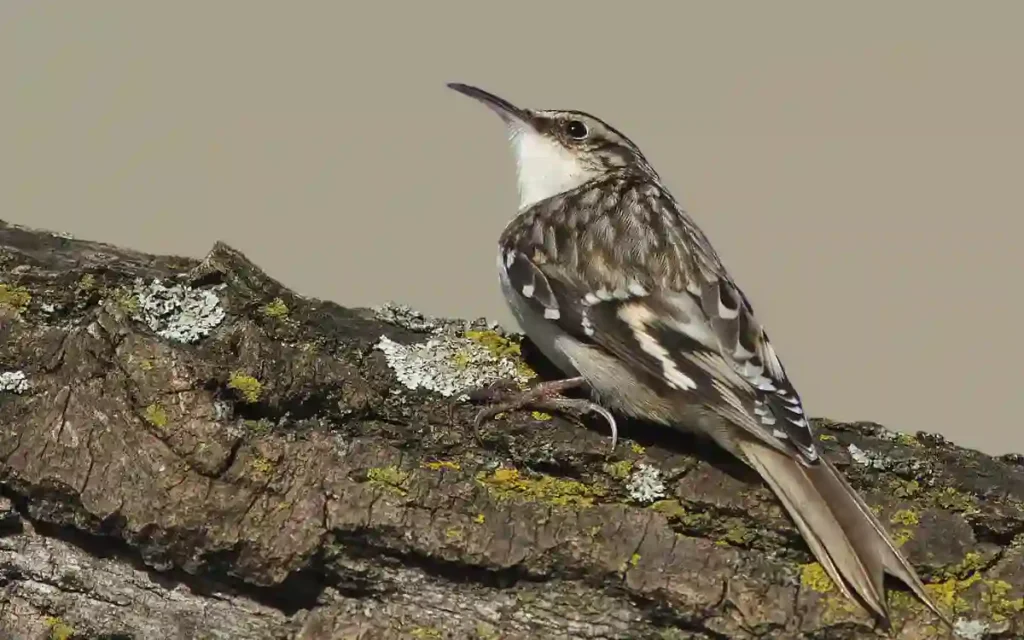
Perfectly camouflaged against bark, Brown Creepers spiral up trunks, probing crevices with a slender, down-curved bill. They nest behind loose bark and feed on tiny insects and spiders great natural pest control for woodlots and parks. Watch for a “moving bark chip” on mature trees; they often follow mixed flocks.
- Length:4.7-5.5 in (12-14 cm)
- Weight:0.2-0.3 oz (5-10 g)
- Wingspan: 6.7-7.9 in (17-20 cm)
14) Bewick’s Wren (Thryomanes bewickii)

Slim, long-tailed wren with crisp white outer tail edges and a strong white eyebrow. Prefers brushy, open woodlands and scrub. Loud, musical song with clear phrases. Less common in Florida than Carolina Wrens, but worth learning scan low shrubs and tangled edges. Eats insects and spiders gleaned from foliage.
- Length:5.1 in (13 cm)
- Weight:0.3-0.4 oz (8-12 g)
- Wingspan: 7.1 in (18 cm)
15) Winter Wren (Troglodytes hiemalis)
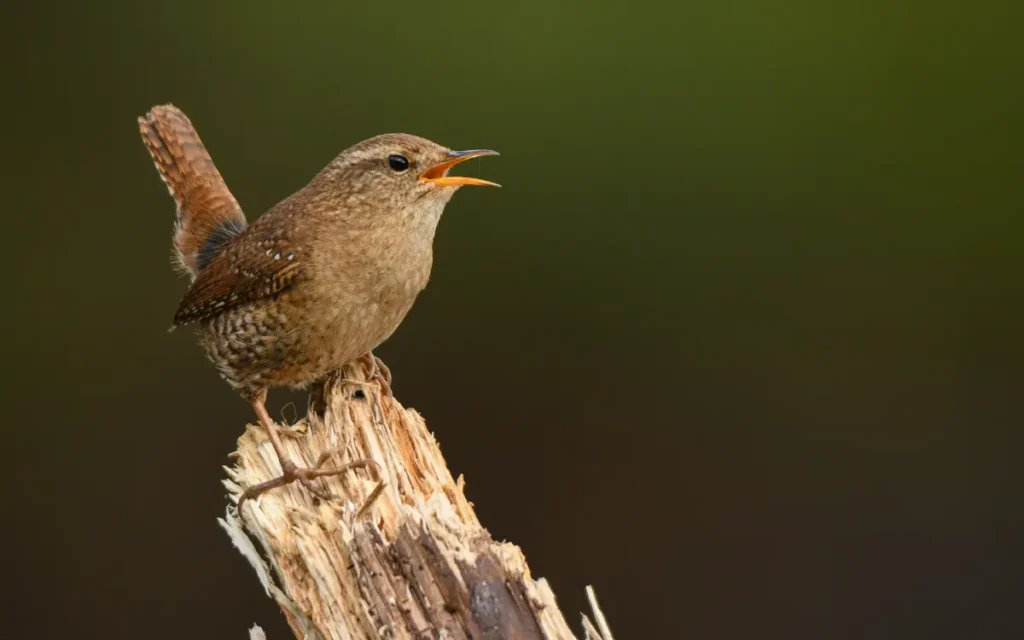
Tiny, round, short-tailed, and dark brown often cocking its tail straight up. Despite its size, it delivers an explosive, cascading song in dense woodlands and damp ravines. In Florida, mostly a winter visitor, creeping through roots, logs, and mossy tangles for insects. For more pint-sized species, see tiny birds in Florida.
- Length:3.1-4.7 in (8-12 cm)
- Weight:0.3-0.4 oz (8-12 g)
- Wingspan: 4.7-6.3 in (12-16 cm)
16) White-throated Sparrow (Zonotrichia albicollis)
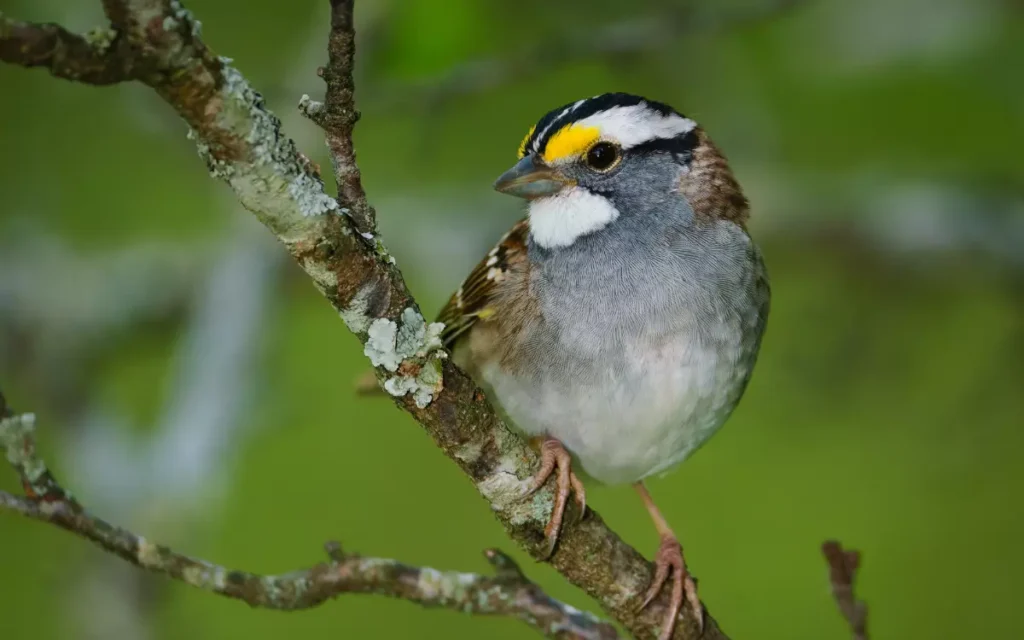
A handsome winter sparrow with a bright white throat and yellow lores near the eyes. Its clear, whistled “Old-Sam-Peabody” song is a favorite among birders. Finds seeds and insects by scratching leaf litter under shrubs. Forms mixed flocks in migration—watch hedgerows, feeders, and naturalized gardens.
- Length:6.3-7.1 in (16-18 cm)
- Weight:0.8-1.1 oz (22-32 g)
- Wingspan: 7.9-9.1 in (20-23 cm)
Why Brown Birds Matter in Florida
Brown birds provide year-round pest control by eating insects, disperse seeds that regenerate forests and fields, and form critical links in food webs (prey for raptors and owls found in Florida). Wetland species also share habitats with waterfowl—learn more in our guide to geese in Florida.
Birdwatching Tips (Where & When)
- Wetlands & Marsh Edges: Marsh Wren, Swamp Sparrow, Savannah Sparrow (winter). Also scan these areas for seasonal waterfowl and geese in Florida.
- Mature Forests & Shady Parks: Wood Thrush (north, warm season), Hermit Thrush (winter), Brown Creeper.
- Edges, Yards & Scrub: Carolina Wren, House Wren, Eastern Towhee, Song Sparrow (winter). Build a bird-friendly yard—see backyard birds in Florida.
- Feeder Adds: Native plantings + seed blends attract sparrows and finches—more in finches in Florida.
Chasing color variety? Compare with warblers in Florida, white birds, or woodpeckers.
Conservation & How You Can Help
- Protect habitats: Wetlands for wrens/sparrows; mature forests for thrushes.
- Native landscaping: Dense shrubs, leaf litter, brush piles, and water sources benefit ground-foragers.
- Avoid pesticides: Safeguard insect prey and reduce poisoning risks.
- Citizen science: Report sightings to eBird and local counts.For color-based ID resources that complement this guide, explore white birds, red birds, and specialized families like woodpeckers.
FAQs
What are the most common brown backyard birds in Florida?
Carolina Wren, House Wren (seasonal), Eastern Towhee (female), Song Sparrow (winter). Get yard setup tips in backyard birds in Florida.
Which brown birds are winter visitors?
White-throated, Song, Swamp, and Savannah Sparrows; Hermit Thrush; Winter Wren.
How do I tell sparrows apart?
Look for the pink bill on Field Sparrow, yellow lores on White-throated and Savannah Sparrows, and the central breast spot on Song Sparrow.
Where should I look for marsh species?
Cattail and cordgrass stands for Marsh Wren and wintering sparrows; the same areas often host seasonal waterfowl and geese.
What other Florida bird groups should I learn to improve my ID skills?
Try colorful families like warblers, structural foragers like woodpeckers, and size-based guides like tiny birds in Florida.

